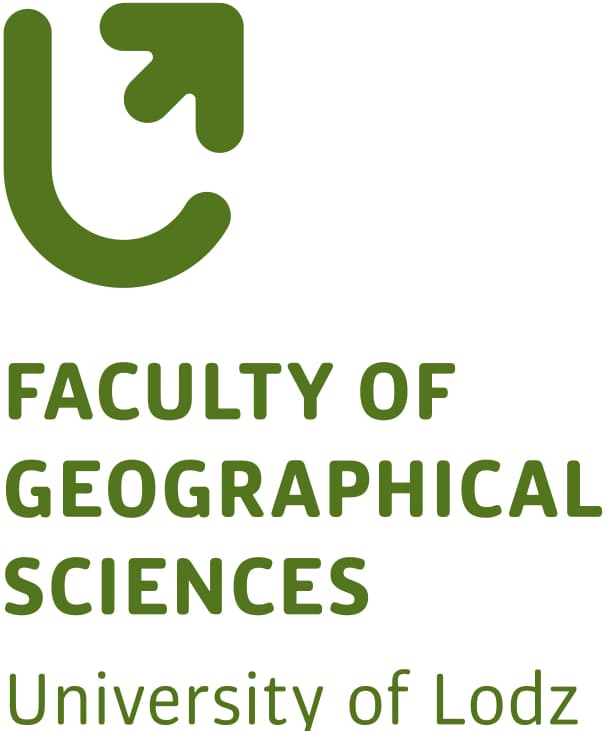
Author Guidelines for Congress Book of Proceedings follow exactly the guidelines for AESOP Transactions journal. Please refer to them (below) while preparing your text for submission.
General remarks
The submission has not been previously published, nor is it before another journal for consideration.
Full-length papers should be up to 8,000 words long (including notes and references).
Manuscripts should be submitted both as a Word document (see below for structure and style guidelines) and a PDF file. They should include the following: title of article, abstract (no more than 125 words), three to five keywords; main text; references; appendices; acknowledgements (as appropriate). A title page should include authors’ names and affiliations.
Where available, URLs for the references have been provided.
Tables and table captions, figures and figure captions should be embedded in text in the position where they should ideally be placed. However, figures should also be submitted separately in jpeg format to allow sufficient quality and resolution (see below).
Any funding or grant awarding bodies should be acknowledged at the end of the paper.
The text adheres to the stylistic and bibliographic requirements outlined below.
Style and Conventions
Please prepare your manuscript as a Word document using A4 portrait page size and ‘normal’ margins (top 2.5 cm, bottom 2.5 cm, left 2.5 cm, right 2.5 cm). All text, including tables and figures, should be typed in Arial font. Main text and headings should be in font size 12, while the captions and titles of tables and figures, and the text in them are to be in font 11.
Line spacing should be single and a single line space should be left between paragraphs. Text should be right and left justified.
Use -ise/-isation endings rather than -ize/-ization (e.g., realisation, authorise etc.). Use English spelling rather than American (centre, not center etc.) except for American proper names (e.g., Kennedy Space Center).
Use italics for emphasis, not bold or underlining.
Use bullets in the text to break up lists and the like, rather than a), b), c) etc.
Use single quotation marks. Dates should be in the form of ‘day month year’, with a comma after the month e.g., 10 May, 1998, not May 10 1998 or 10th May 1998 or 10 May, 1998 or 10.5.98. Other examples include: from 2000–2016 (note the end dash, not a hyphen); from 11–15 December, 2016; from 1 January–15 December, 2015; between 1 January and 15 December, 2015.
In using numbers, spell out one to nine, use numerals after (except for page numbers, dates, percentages, special usages in text [e.g., Type 3], numbers in headings, tables, etc., ages, money, time and dates, temperature, dimensions). Spell out after a million (e.g., 1,000 100,000 1 million). Unless exact figures are important, round up or down large numbers – use your discretion, e.g., instead of 1,250,000; use 1.25 million; instead of 1,256,456; use over 1.25 million. Avoid beginning a sentence with numbers, but if avoidance is not possible, always spell out.
In the main text, spell out ‘percent’. Inside brackets, use the % symbol, e.g., 12 percent and (12%).
When using abbreviations or acronyms, spell them out in full on their first use. In all subsequent uses, use the abbreviation. For the European Union, United Kingdom and United States, spell out at all times unless used as an adjective, e.g., US control, EU Commission, UK Parliament. Do not use full points within abbreviations or acronyms.
Structure
As far as the structure of the paper is concerned, please refer to the following table:
|
Element |
Description |
|
Title Page |
This should include the title of the article, name(s) of author(s), full professional postal addresses, current affiliation and a clear indication of who the corresponding author is. In addition, the title page should include a short Biographical note on author(s). |
|
Abstract |
Your paper should begin with an abstract of about 150 words. Do not include any references in your abstract. |
|
Keywords |
Keywords should follow the abstract. Three to five keywords should be provided. |
|
Main Text |
The main text is to follow the abstract and keywords, presented in sections and subsection. |
|
Sections and Headings |
Divide your article into clearly defined and numbered sections. Subsections should be numbered 1.1 (then 1.1.1, 1.1.2, ...), 1.2, etc. (the abstract is not included in section numbering). Use this numbering also for internal cross-referencing: do not just refer to ‘the text’. Any subsection may be given a brief heading. Each heading should appear on its own separate line. The highest heading level and the second heading level should be bold, capitalizing the initial letter of each word. The third heading level should be italic, with the initial letter of each word typed in capital. Leave one line of space before and after each heading. |
Figures and Tables
Maps, diagrams, charts and photographs should be referred to as ‘Figures’ and should be numbered in a single sequence in the order in which they are referred to in the paper.
All figures should have brief descriptive captions.
Figures should be embedded in text where you would ideally like them to appear and be supplied digitally as separate files. They should be jpeg files and prepared in appropriate resolution: 1200 dpi for line art, 600 dpi for grey scale and 300 dpi for colour.
Tables should be numbered in a single sequence in the order in which they are referred to in the paper. They are to be embedded in the text where you would ideally like them to appear. All tables should be supplied as tables in Word, so that the text might be edited by the copy editor.
Quotations
Quotations in the text of more than 30 or so words should be pulled out of the text and indented, using indents, not tabs. They should have a line space above and below them. Indented quotations should not be put in quotation marks. Italics only those parts of the quotation that were in italics in the original, unless you specifically want to stress part of a quote, in which case you should add ‘(emphasis added)’ after the quotation.
References
AESOP Congress 2023 Book of Proceedings uses the author–date system in references and follows the Harvard referencing style (aside from the spelling of the first names of authors, which are to be written out in full – please see the examples below). Please avoid using footnotes wherever possible. However, where their use is unavoidable, please use superscript numbers within the text corresponding with the number of the relevant footnote.You must make sure that all references which appear in the text are given in full in the references section. Where there is more than one reference to the same author for the same year, they should be listed as 1995a, 1995b etc.
The references section should be a continuous alphabetical list. Do not divide the list into different sections (books, reports, newspaper articles etc.). Where there is more than one reference to the same author, that author’s references should appear in chronological order, with references to that author in conjunction with others coming after the last reference to the author alone.
For example:
Campbell, Neil A. (1990)
Campbell, Neil A. (1996)
Campbell, Neil A. and Jane Reece (1989)
EXAMPLES
Book (1 author)
Family/Surname, First Name (Publication year in brackets) Book title - italicised. Series title and volume if applicable. Place of publication: Publisher.
Bibliography exampleFriedmann, John (1987) Planning in the public domain: From knowledge to action. Princeton, NJ: Princeton University Press.In-text example
Friedmann (1987) argues that...
‘Quotation’ (Friedmann, 1987, p.72)
Book multiple authors
Family/Surname, First Name,
First Name Family/Surname and First Name Family/Surname, (Publication year in brackets) Book title - italicised. Series title and volume if applicable. Place of publication: Publisher.
Bradbury, Ian, John Boyle and Andy Morse (2002) Scientific principles for physical geographers. Harlow: Prentice Hall.In-text example
As noted by Bradbury, Boyle and Morse (2002)…
‘Quotation’ (Bradbury, Boyle and Morse, 2002, p.51)
Book (Editor/s)
Family/Surname, First Name (ed.) or (eds) – in brackets for editor(s) (Publication year in brackets) Book title - italicised. Series title and volume if applicable. Place of publication: Publisher
Bibliography exampleWilliams, Katie, Elizabeth Burton and Mike Jenks (eds) (2000) Achieving sustainable urban form. London: E&FN Spon.In-text example
(Williams, Burton and Jenks, 2000)
Chapter in an edited book
Family/Surname, First Name of the author writing the chapter (Publication year in brackets) Title of chapter. In: Family/ Surname, First Name of editor(s) of book (ed.) or (eds) Book title - italicised. Series title and volume if applicable. Place of publication: Publisher, pp. followed by the page numbers of the chapter.
Bibliography exampleNewman, Peter and Jeffrey Kenworthy (2000) Sustainable urban form: The big picture. In Williams, Katie, Elizabeth Burton and Mike Jenks (eds) Achieving sustainable urban form. London: E&FN Spon, pp.109-120.In-text example
As noted by Newman and Kenworthy (2000)
‘Quotation’ (Newman and Kenworthy, 2000, p.112)
Journal article
Family/Surname, First Name of the author(s) (Publication year in brackets) Title of article. Title of journal – italicised, Volume number (part number/month in brackets), pp. followed by the page numbers of the article.
Bibliography exampleSawicki, David (1988) Planning education and planning practice: Can we plan for the next decade? Journal of Planning Education and Research, 7 (2), pp.115-120.In-text example
As noted by Sawicki (1988)
‘Quotation’ (Sawicki, 1998, p.116)
Web-based resource of website
Family/Surname, First Name or Website name if no author is available (Year in brackets) Title of website in italics. Any numbers if necessary or available if website is part of a series. [Online in square brackets] Available from: URL.
[Accessed followed by date in square brackets].
If general website and no date (n.d.)
Bibliography exampleUN Habitat (2015) International Guidelines on Urban and Territorial Planning. [Online] Available from: https://unhabitat.org/international-guidelines-on-urban-and-territorial-planning Accessed [13/01/2022].
UN Habitat (n.d.) https://unhabitat.org/ Accessed [13/01/2022]
In-text example… according to UN Habitat (2015)
‘Quotation’ (UN Habitat, 2015)
… according to UN Habitat (n.d)
‘Quotation’ (UN Habitat, n.d)
Corporate authors, committee reports etc.
Country and Name of Issuing Body (Year of publication in brackets) Title of publication in italics. Place of publication: Publisher. (Report Number – if applicable in brackets).
Bibliography exampleCommission of the European Communities (1997) The EU compendium of spatial planning systems and policies. Luxembourg: CEC. (Regional Development Studies, 28).In-text example
The Commission of the European Communities (1997) concluded that...
‘Quotation’ (Commission of the European Communities, 1997, p.12)
Working papers, reports etc.
Family/Surname, First Name of author(s) (Publication year in brackets) Title of paper or report (italicised if published) (‘inverted commas’ if not published) (explanation of what the work is in parentheses after the title), place-related information if available.
Bibliography exampleLeone, Anna (2001) ‘Evolution and Change: Town and Country in Late Antique North Africa’ (unpublished PhD thesis), Leicester, University of Leicester.In-text example
Leone (2001) noted that…
‘Quotation’ (Leone, 2001)








